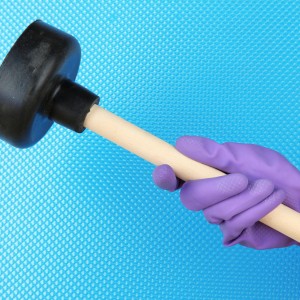-
- 15 Aug
8 Plumbing Skills that Anyone Can Master: Part 2
 Earlier this month we covered the first four of eight plumbing skills that you should consider adding to your home repair repertoire. Now, in part two of this two-part series, here is a brief look at four more basic plumbing skills that just about any homeowner can master.
Earlier this month we covered the first four of eight plumbing skills that you should consider adding to your home repair repertoire. Now, in part two of this two-part series, here is a brief look at four more basic plumbing skills that just about any homeowner can master.Clear a slow or clogged drain
A slow or clogged drain can happen in your kitchen sink due to improper use of the garbage disposal or buildup of food over time. Clogs in bathroom drains, meanwhile, are most commonly caused by an accumulation of hair or soap scum. To clear a clogged drain, you can sometimes physically remove the clog with your hands, while other times you might need a tool such as a drain hook or plumber’s snake. Another option is to plunge the clog, or to pour a specialized drain cleaner down the drain.Clear a clogged toilet
If your home is not equipped with a plunger, now is the time to get one. Store it next to a stack of clean towels that you can lay down in the case of an overflow. To use a plunger, position the bell completely over the drain of the toilet and ensure that there is enough water in the bowl to cover at least the bottom half of the bell. Then, push the plunger downward gently. After this first plunge, move the plunger up and down vigorously without breaking the seal. Repeat until you have disturbed the clog effectively.Stop a running toilet
Sometimes a toilet simply gets stuck running. To fix a running toilet, first try jiggling the handle. If that doesn’t work, turn off the water supply with the toilet’s shut-off valve and inspect the chain that is attached to the flapper. If it’s broken, replace it. You might need to replace the flapper and arm as well.Install a new toilet
As with faucets, toilets are also designed to to be DIY installation friendly. You’ll start your installation by laying down several newspapers or towels on your bathroom floor so that you’ll have a place to set your old toilet after removal. Then, shut off the water supply to the toilet and flush the toilet several times to drain the water. Use a container scoop to scoop out any water that remains in the bowl. Then, disconnect the toilet by unscrewing the nuts that attach the toilet to the water supply line and use a utility knife to loosen the seal between the toilet and the floor. After removing the toilet, remove the wax gasket and cover the drainpipe with a cloth to prevent sewer gas from escaping. Then, install a new wax gasket where the old one was positioned, place your new toilet where the old one was, and caulk and set. Once you bolt the toilet to the floor again, you’re done!About the Author
electric-admin
Contact UsRequest Service
(801) 266-8041
